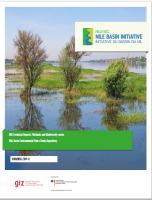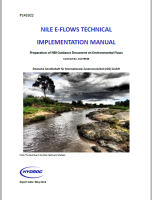Abstract
Historically, water has been managed from a supply perspective with an emphasis on short-term
economic growth from the use of the water. In this respect many municipalities, water service
boards and other local authorities strive to supply water in abundance to their community. This has
led to unprecedented environmental degradation.
This has been witnessed in the over-consumption of Upper Athi River and Upper Tana River for supply
to the City of Nairobi. There is a danger of similar situation recurring on the Kibos River for
abstraction to the City of Kisumu. The water-resources planners such as water supply, hydropower,
and irrigation engineers, need to give due emphasis to understanding of the need for environmental
flows required to maintain the health of the ecosystem of these rivers.
Most of the methods developed so far are project specific or basin specific and cannot be readily
applied in Kenya as hydrological and physical characteristics of the rivers/basins for which the
methods are developed, are different from that of Kenyan rivers/basins. There is therefore a need
to select standard methods and software/s which can be used at national level irrespective of the
type and scale of project under consideration. his research has used HEC- Ecological Functioning
Model (EFM) an open source software in water resources planning (in the Kenyan context) through
modeling of Kisumu Water Supply and Sanitation Long Term Action Plan, using Kibos River as source
of water.
The three environmental indicators employed for the research are fish (Labeo, Clarias and Barbus),
micro-invertebrates in general and Nyamasaria swamp as wetland.
The methods applied for assessment of risk level are modified method derived from Davies and
Humphries (1996) for Risk Levels Assessment based on Modified Key Ecological Variables and the
method developed by Tannent in 1976 for identified critical minimum flows required for Fish,
Wildlife and Recreation in streams. .
The research has revealed that there will be environmental change on Kibos River due to the
proposed intake/diversion weir on Kibos River. It is expected that there will be significant
migration of fishes from the affected reach of the river to the reach upstream of the diversion
weir and to the river reach downstream of Awach and Kibos confluence. This can only happen if the
run-of-river scheme treatment plant is operated
at 48,000 m3/day throughout the year.



